A 3D Interferometer-Type Lightning Mapping Array for Observation of Winter Lightning in Japan
Abstract
1. Introduction
2. Instrumentation and Methods
3. Observation and Data
4. Preliminary Results
4.1. 2D Mapping Using Individual Stations
4.2. 3D Mapping by Using 3 Stations
4.3. An Attempt to Better Characterize Preliminary Breakdowns
4.4. An Attempt to Characterize the Positive Return Stroke
5. Discussion and Concluding Remarks
Author Contributions
Funding
Data Availability Statement
Acknowledgments
Conflicts of Interest
References
- Wang, D.; Wu, T.; Takagi, N. Charge Structure of Winter Thunderstorm in Japan: A Review and an Update. IEEJ Trans. Power Energy 2018, 138, 310–314. [Google Scholar] [CrossRef]
- Zheng, D.; Wang, D.; Zhang, Y.; Wu, T.; Takagi, N. Charge regions indicated by LMA lightning flashes in Hokuriku’s winter thunderstorms. J. Geophys. Res. Atmos. 2019, 124, 7179–7206. [Google Scholar] [CrossRef]
- Huang, H.; Wang, D.; Yang, J.; Wu, T.; Takagi, N. Complicated aspects of a CG lightning flash observed in winter storm in Japan. J. Atmos. Electr. 2022, 41, 11–29. [Google Scholar] [CrossRef]
- Wang, D.; Wu, T.; Huang, H.; Yang, J.; Yamamoto, K. 3D Mapping of Winter Lightning in Japan with an Array of Discone Antennas. IEEJ Trans. Electr. Electron. Eng. 2022, 7, 1606–1612. [Google Scholar] [CrossRef]
- Stock, M.G.; Akita, M.; Krehbiel, P.R.; Rison, W.; Edens, H.E.; Kawasaki, Z.; Stanley, M.A. Continuous broadband digital interferometry of lightning using a generalized cross-correlation algorithm. J. Geophys. Res. Atmos. 2014, 119, 3134–3165. [Google Scholar] [CrossRef]
- Warwick, J.W.; Hayenga, C.O.; Brosnahan, J.W. Interferometric directions of lightning sources at 34 MHz. J. Geophys. Res. Atmos. 1979, 84, 2457. [Google Scholar] [CrossRef]
- Rhodes, C.T.; Shao, X.M.; Krehbiel, P.R.; Thomas, R.J.; Hayenga, C.O. Observations of lightning phenomena using radio interferometry. J. Geophys. Res. Atmos. 1994, 99, 13059–13082. [Google Scholar] [CrossRef]
- Shao, X.M.; Holden, D.N.; Rhodes, C.T. Broad band radio interferometry for lightning observations. Geophys. Res. Lett. 1996, 23, 1917–1920. [Google Scholar] [CrossRef]
- Ushio, T.-O.; Kawasaki, Z.-I.; Ohta, Y.; Matsuura, K. Broad band interferometric measurement of rocket triggered lightning in Japan. Geophys. Res. Lett. 1997, 24, 2769–2772. [Google Scholar] [CrossRef]
- Akita, M.; Stock, M.; Kawasaki, Z.; Krehbiel, P.; Rison, W.; Stanley, M. Data processing procedure using distribution of slopes of phase differences for broadband VHF interferometer. J. Geophys. Res. Atmos. 2014, 119, 6085–6104. [Google Scholar] [CrossRef]
- Yoshida, S.; Biagi, C.J.; Rakov, V.A.; Hill, J.D.; Stapleton, M.V.; Jordan, D.M.; Uman, M.A.; Morimoto, T.; Ushio, T.; Kawasaki, Z.-I. Three-dimensional imaging of upward positive leaders in triggered lightning using VHF broadband digital interferometers. Geophys. Res. Lett. 2010, 37, L05805. [Google Scholar] [CrossRef]
- Liu, H.; Dong, W.; Wu, T.; Zheng, D.; Zhang, Y. Observation of compact intracloud discharges using VHF broadband interferom-eters. J. Geophys. Res. Atmos. 2012, 117, D01203. [Google Scholar]
- Jensen, D.P.; Sonnenfeld, R.G.; Stanley, M.A.; Edens, H.E.; da Silva, C.L.; Krehbiel, P.R. Dart-leader and k-leader velocity from initiation site to termination time-resolved with 3d interferometry. J. Geophys. Res. Atmos. 2021, 126, e2020JD034309. [Google Scholar] [CrossRef]
- Thyer, N. Double Theodolite Pibal Evaluation by Computer. J. Appl. Meteorol. 1962, 1, 66–68. [Google Scholar] [CrossRef]
- Liu, H.; Qiu, S.; Dong, W. The Three-Dimensional Locating of VHF Broadband Lightning Interferometers. Atmosphere 2018, 9, 317. [Google Scholar] [CrossRef]
- Mardiana, R.; Kawasaki, Z.-I.; Morimoto, T. Three-dimensional lightning observations of cloud-to-ground flashes using broadband interferometers. J. Atmos. Sol.-Terr. Phys. 2002, 64, 91–103. [Google Scholar] [CrossRef]
- Wang, D.; Takagi, N. Characteristics of Winter Lightning that Occurred on a Windmill and its Lightning Protection Tower in Japan. IEEJ Trans. Power Energy 2012, 132, 568–572. [Google Scholar] [CrossRef]
- Wu, T.; Wang, D.; Takagi, N. Lightning Mapping with an Array of Fast Antennas. Geophys. Res. Lett. 2018, 45, 3698–3705. [Google Scholar] [CrossRef]
- Wu, T.; Wang, D.; Takagi, N. Upward Negative Leaders in Positive Upward Lightning in Winter: Propagation Velocities, Electric Field Change Waveforms, and Triggering Mechanism. J. Geophys. Res. Atmos. 2020, 125, e2020JD032851. [Google Scholar] [CrossRef]
- Lyu, F.; Cummer, S.A.; Qin, Z.; Chen, M. Lightning Initiation Processes Imaged with Very High Frequency Broadband Interferometry. J. Geophys. Res. Atmos. 2019, 124, 2994–3004. [Google Scholar] [CrossRef]
- Shao, X.M.; Ho, C.; Bowers, G.; Blaine, W.; Dingus, B. Lightning interferometry uncertainty, beam steering interferometry, and ev-idence of lightning being ignited by a cosmic ray shower. J. Geophys. Res. Atmos. 2020, 125, e2019JD032273. [Google Scholar] [CrossRef]
- Yin, W.; Jin, W.; Zhou, C.; Liu, Y.; Tang, Q.; Liu, M.; Chen, G.; Zhao, Z. Lightning detection and imaging based on VHF radar inter-ferometry. Remote Sens. 2021, 13, 2065. [Google Scholar] [CrossRef]
- Wu, T.; Wang, D.; Takagi, N. Multiple-stroke positive cloud-to-ground lightning observed by the FALMA in winter thunderstorms in Japan. J. Geophys. Res. Atmos. 2020, 125, e2020JD033039. [Google Scholar] [CrossRef]
- Yang, J.; Wang, D.; Huang, H.; Wu, T.; Takagi, N.; Yamatomo, K. Development of an Interferometer-type Lightning Mapping Array System. In Proceedings of the 2022 36th International Conference on Lightning Protection (ICLP), Cape Town, South Africa, 2–7 October 2022; pp. 350–353. [Google Scholar]
- Wu, T.; Takayanagi, Y.; Funaki, T.; Yoshida, S.; Ushio, T.; Kawasaki, Z.-I.; Morimoto, T.; Shimizu, M. Preliminary breakdown pulses of cloud-to-ground lightning in winter thunderstorms in Japan. J. Atmos. Sol.-Terr. Phys. 2013, 102, 91–98. [Google Scholar] [CrossRef]
- Wu, T.; Yoshida, S.; Akiyama, Y.; Stock, M.; Ushio, T.; Kawasaki, Z. Preliminary breakdown of intracloud lightning: Initiation altitude, propagation speed, pulse train characteristics, and step length estimation. J. Geophys. Res. Atmos. 2015, 120, 9071–9086. [Google Scholar] [CrossRef]
- Marshall, T.; Bandara, S.; Karunarathne, N.; Karunarathne, S.; Kolmasova, I.; Siedlecki, R.; Stolzenburg, M. A study of lightning flash initiation prior to the first initial breakdown pulse. Atmos. Res. 2018, 217, 10–23. [Google Scholar] [CrossRef]
- Shi, D.; Wang, D.; Wu, T.; Takagi, N. Temporal and Spatial Characteristics of Preliminary Breakdown Pulses in Intracloud Lightning Flashes. J. Geophys. Res. Atmos. 2019, 124, 12901–12914. [Google Scholar] [CrossRef]
- Kolmasova, I.; Marshall, T.; Bandara, S.; Karunarathne, S.; Stolzenburg, M.; Karunarathne, N.; Siedlecki, R. Initial Breakdown Pulses Accompanied by VHF Pulses During Negative Cloud-to-Ground Lightning Flashes. Geophys. Res. Lett. 2019, 46, 5592–5600. [Google Scholar] [CrossRef]
- Rison, W.; Krehbiel, P.R.; Stock, M.G.; Edens, H.E.; Shao, X.-M.; Thomas, R.J.; Stanley, M.A.; Zhang, Y. Observations of narrow bipolar events reveal how lightning is initiated in thunderstorms. Nat. Commun. 2016, 7, 10721. [Google Scholar] [CrossRef]
- Stock, M.G.; Krehbiel, P.R.; Lapierre, J.; Wu, T.; Stanley, M.A.; Edens, H.E. Fast positive breakdown in lightning. J. Geophys. Res. Atmos. 2017, 122, 8135–8152. [Google Scholar] [CrossRef]
- Tilles, J.N.; Liu, N.; Stanley, M.A.; Krehbiel, P.R.; Rison, W.; Stock, M.G.; Dwyer, J.R.; Brown, R.; Wilson, J. Fast negative breakdown in thunderstorms. Nat. Commun. 2019, 10, 1648. [Google Scholar] [CrossRef] [PubMed]
- Shao, X.M.; Krehbiel, P.R.; Thomas, R.J.; Rison, W. Radio interferometric observations of cloud-to-ground lightning phenomena in Florida. J. Geophys. Res. Atmos. 1995, 100, 2749–2783. [Google Scholar] [CrossRef]
- Li, Y.; Qiu, S.; Shi, L.; Wang, T.; Zhang, Q.; Lei, Q.; Sun, Z. Observed Variation of Three-Dimensional Return Stroke Speeds Along the Channel in Rocket-Triggered Lightning. Geophys. Res. Lett. 2018, 45, 12569–12575. [Google Scholar] [CrossRef]
- Idone, V.P.; Orville, R.E. Lightning return stroke velocities in the thunderstorm research international program (TRIP). J. Geophys. Res. Atmos. 1982, 87, 4903–4916. [Google Scholar] [CrossRef]
- Jordan, D.M.; Rakov, V.A.; Beasley, W.H.; Uman, M.A. Luminosity characteristics of dart leaders and return strokes in natural lightning. J. Geophys. Res. Atmos. 1997, 102, 22025–22032. [Google Scholar] [CrossRef]
- Wang, D.; Takagi, N.; Watanabe, T.; Rakov, V.A.; Uman, M.A. Observed leader and return-stroke propagation characteristics in the bottom 400 m of a rocket-triggered lightning channel. J. Geophys. Res. Atmos. 1999, 104, 14369–14376. [Google Scholar] [CrossRef]
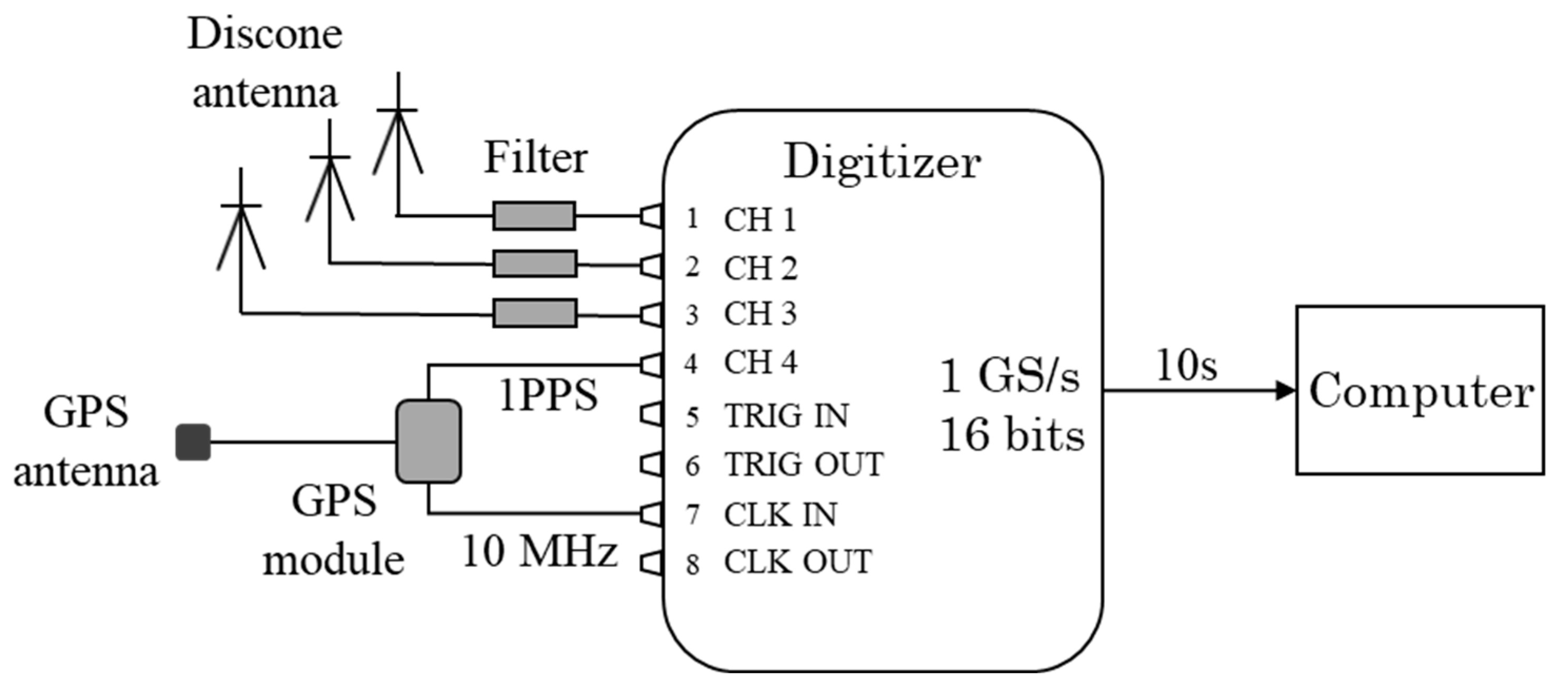
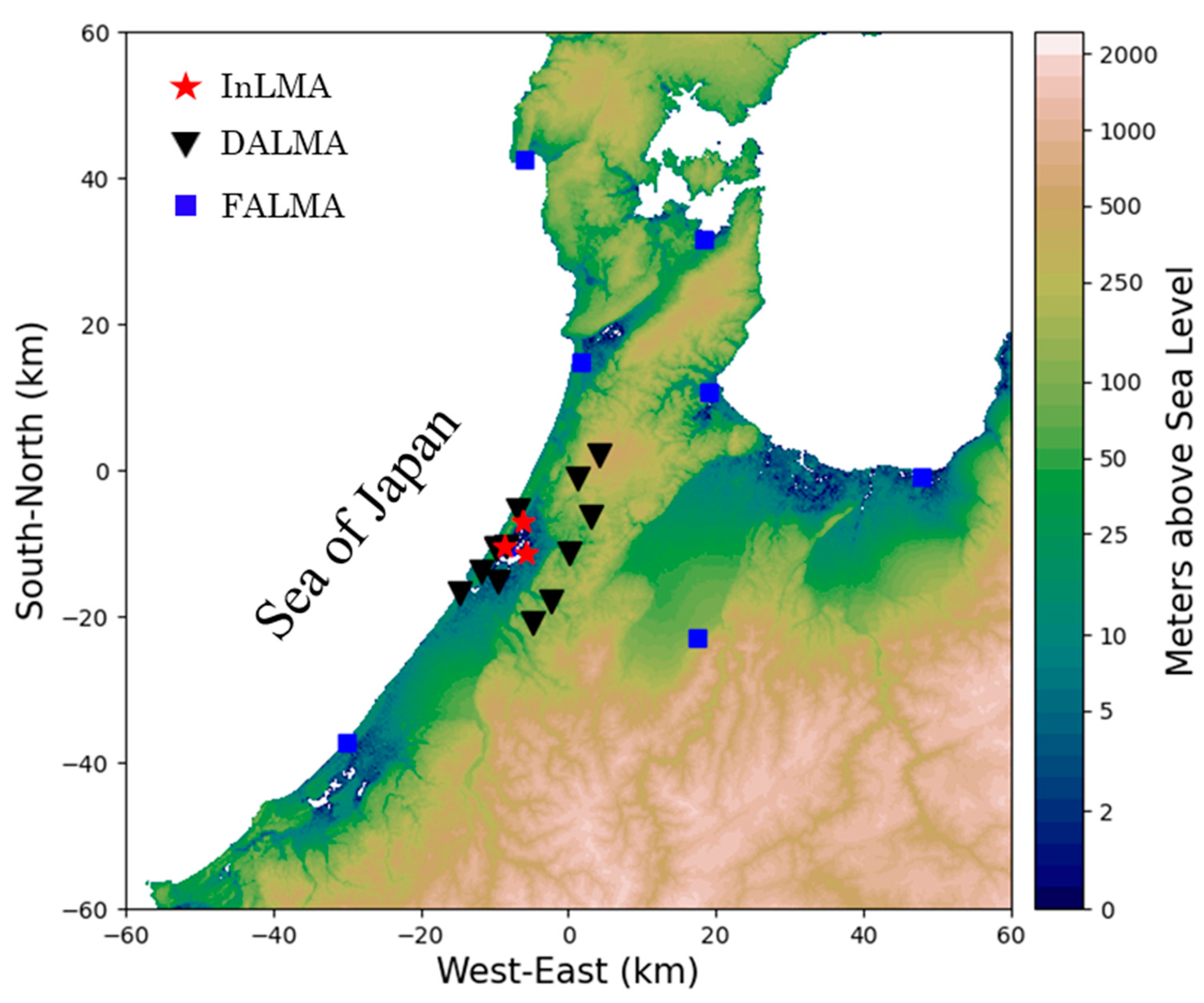

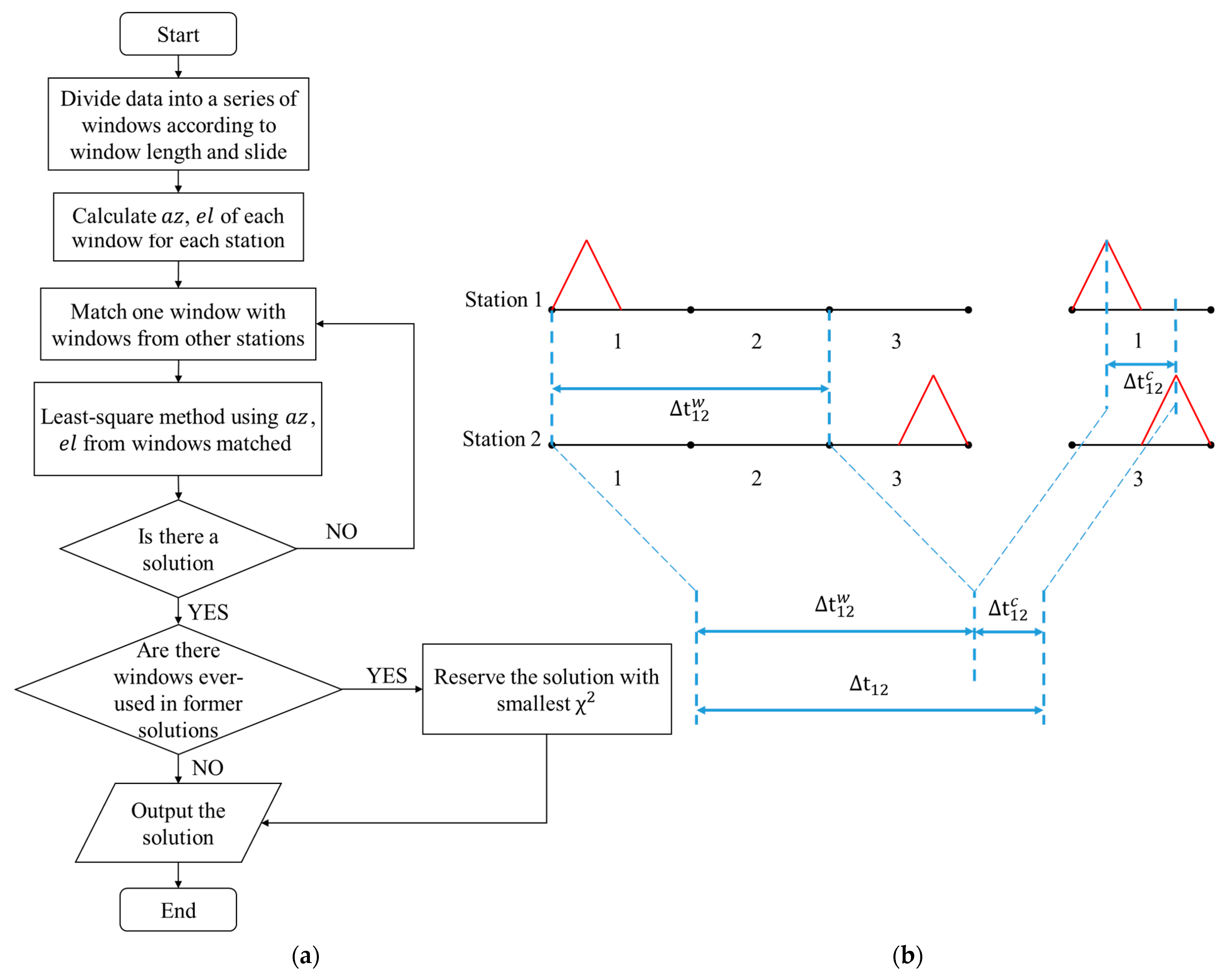
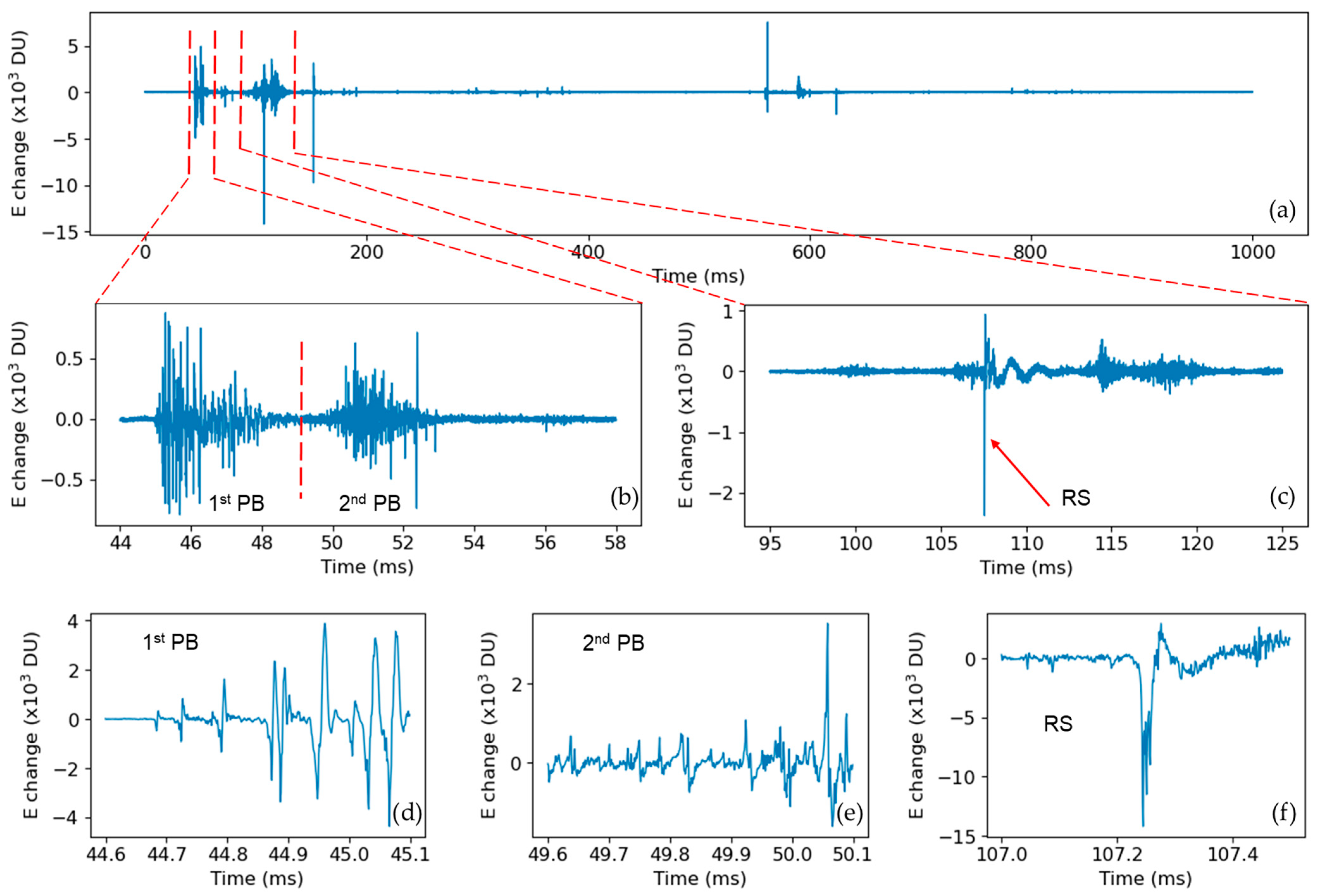
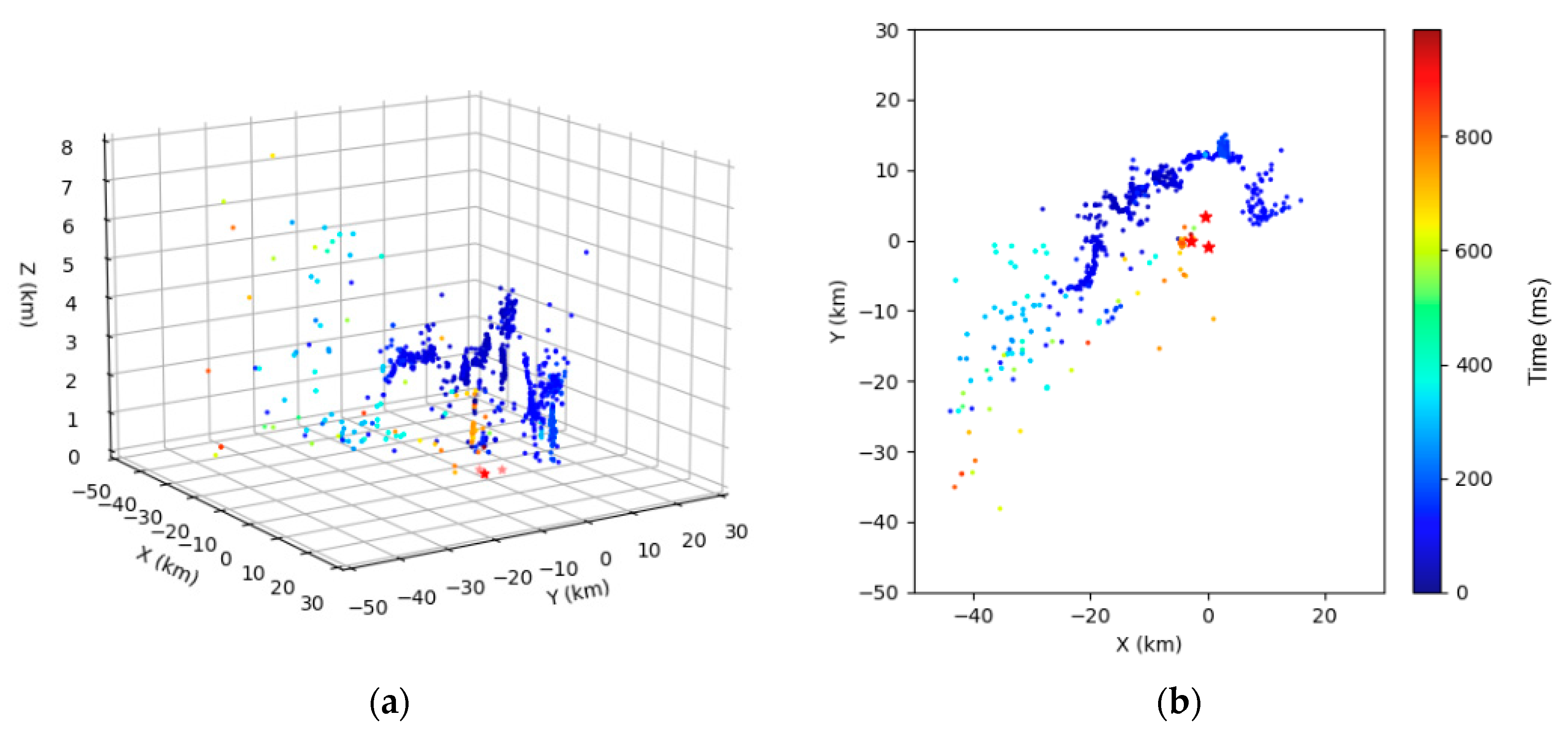
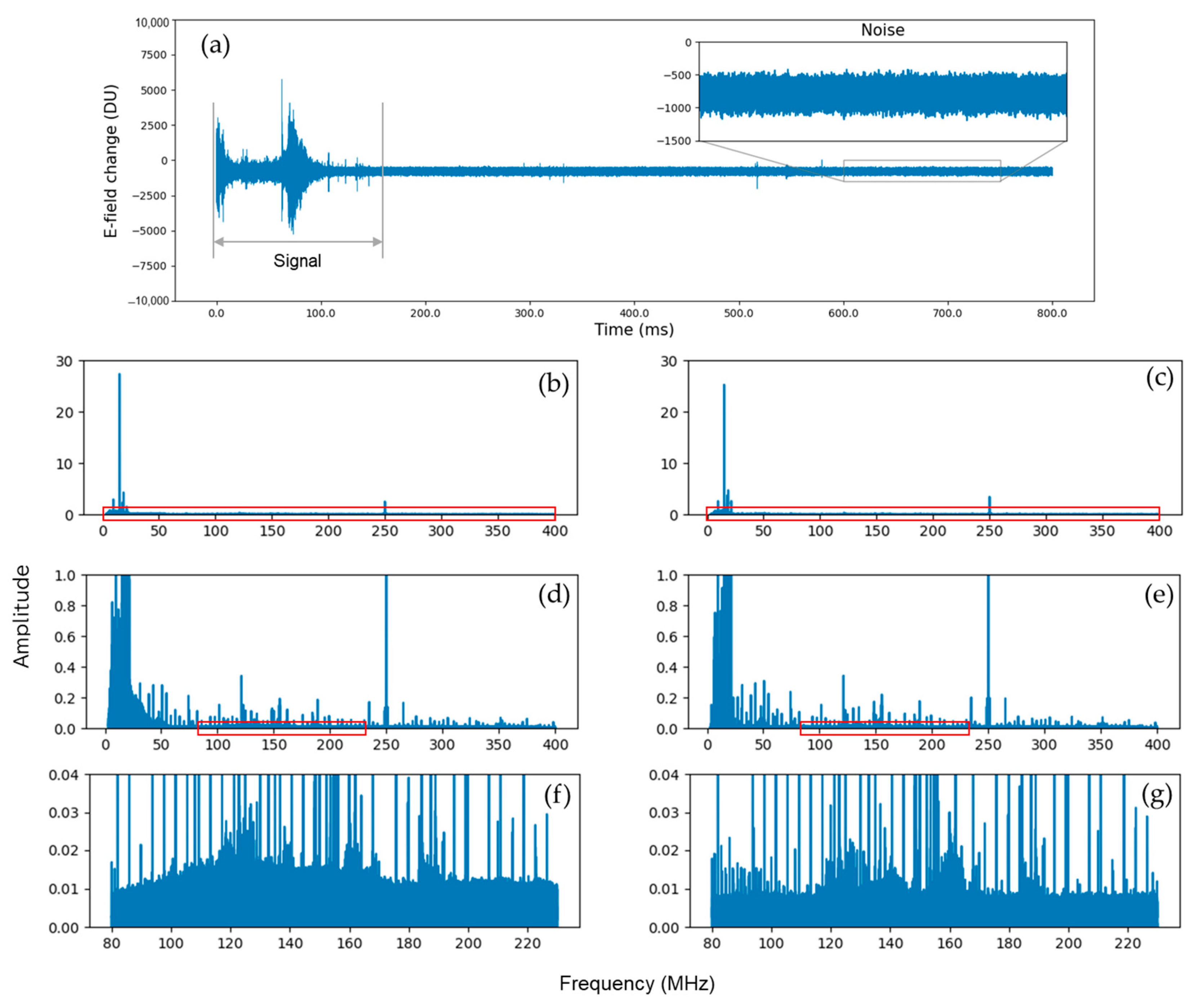
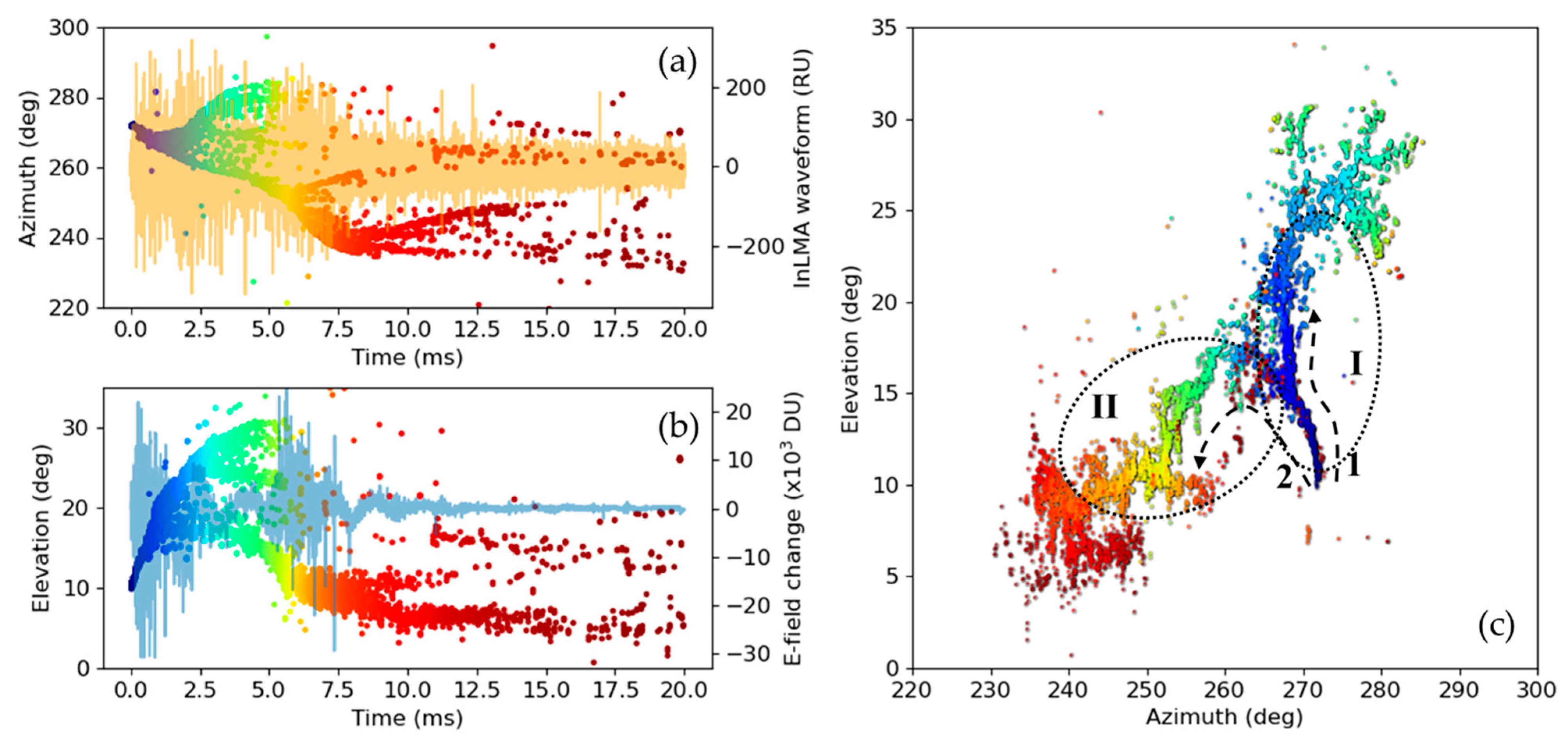
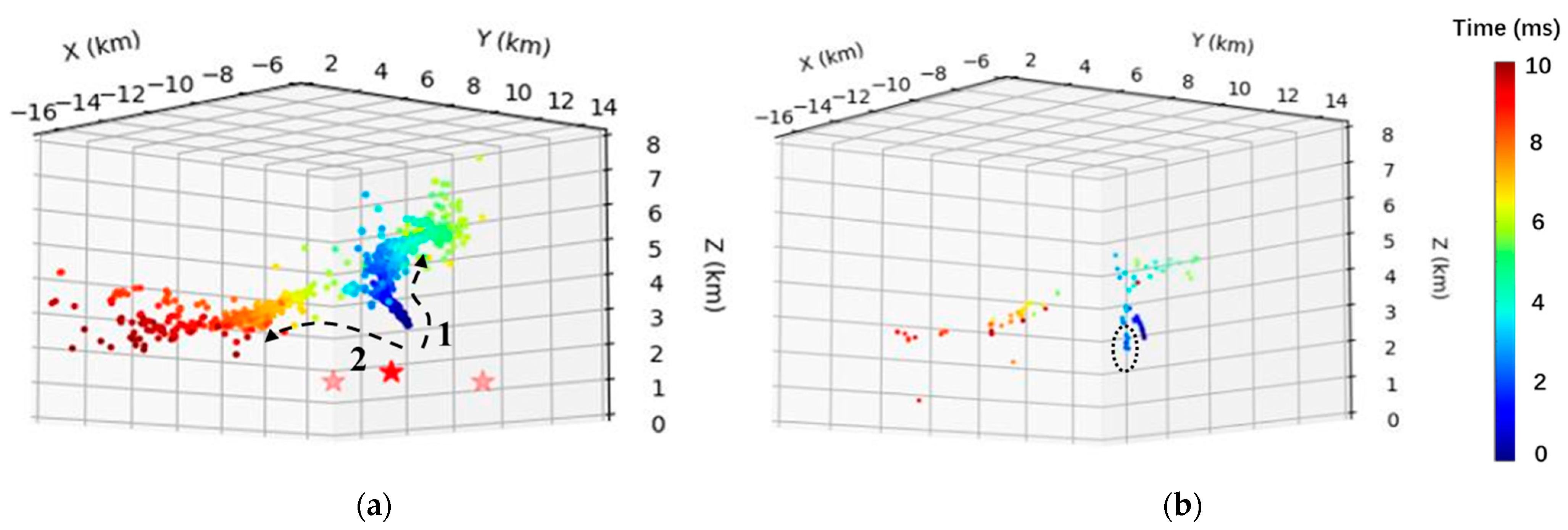
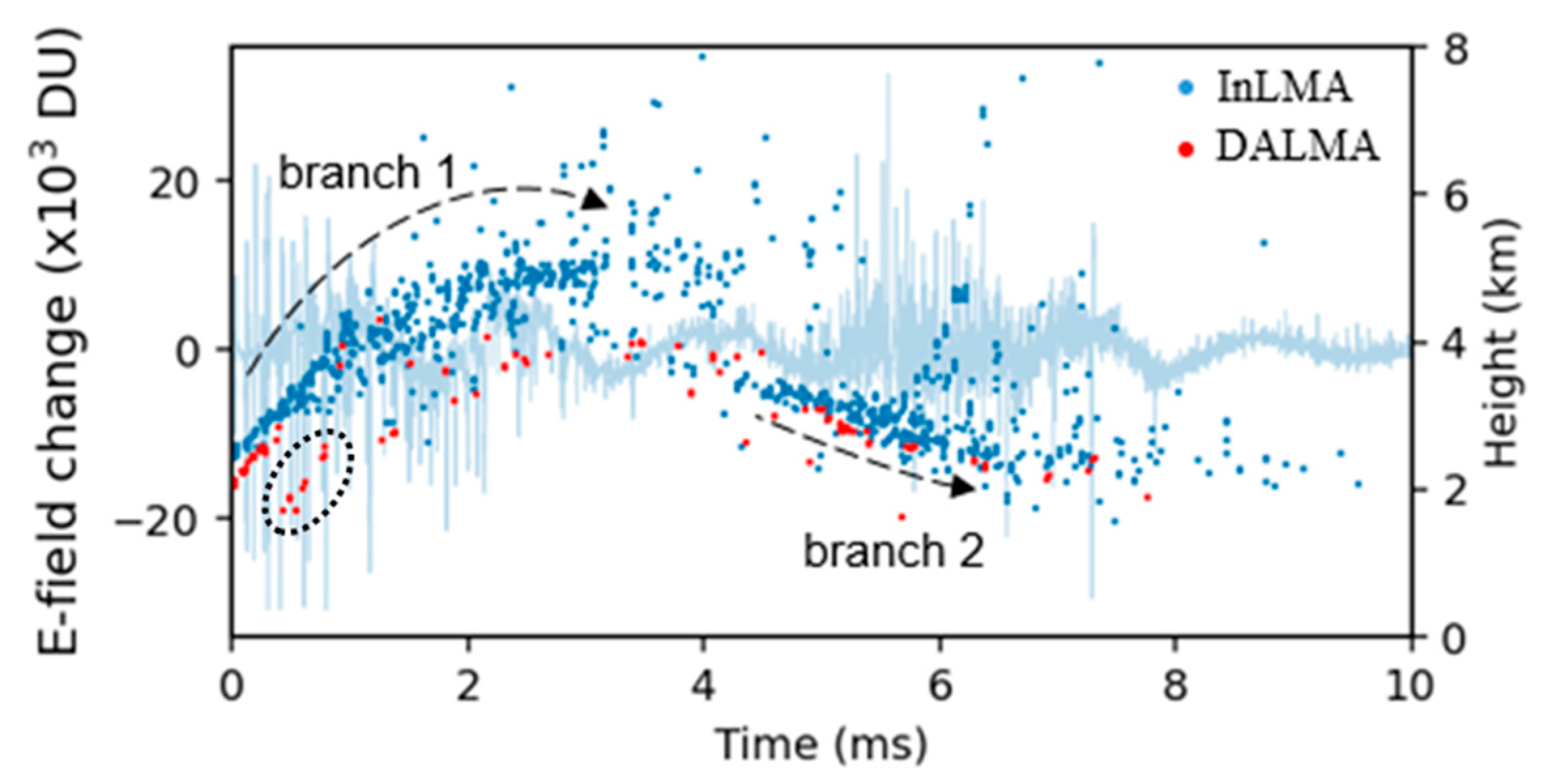
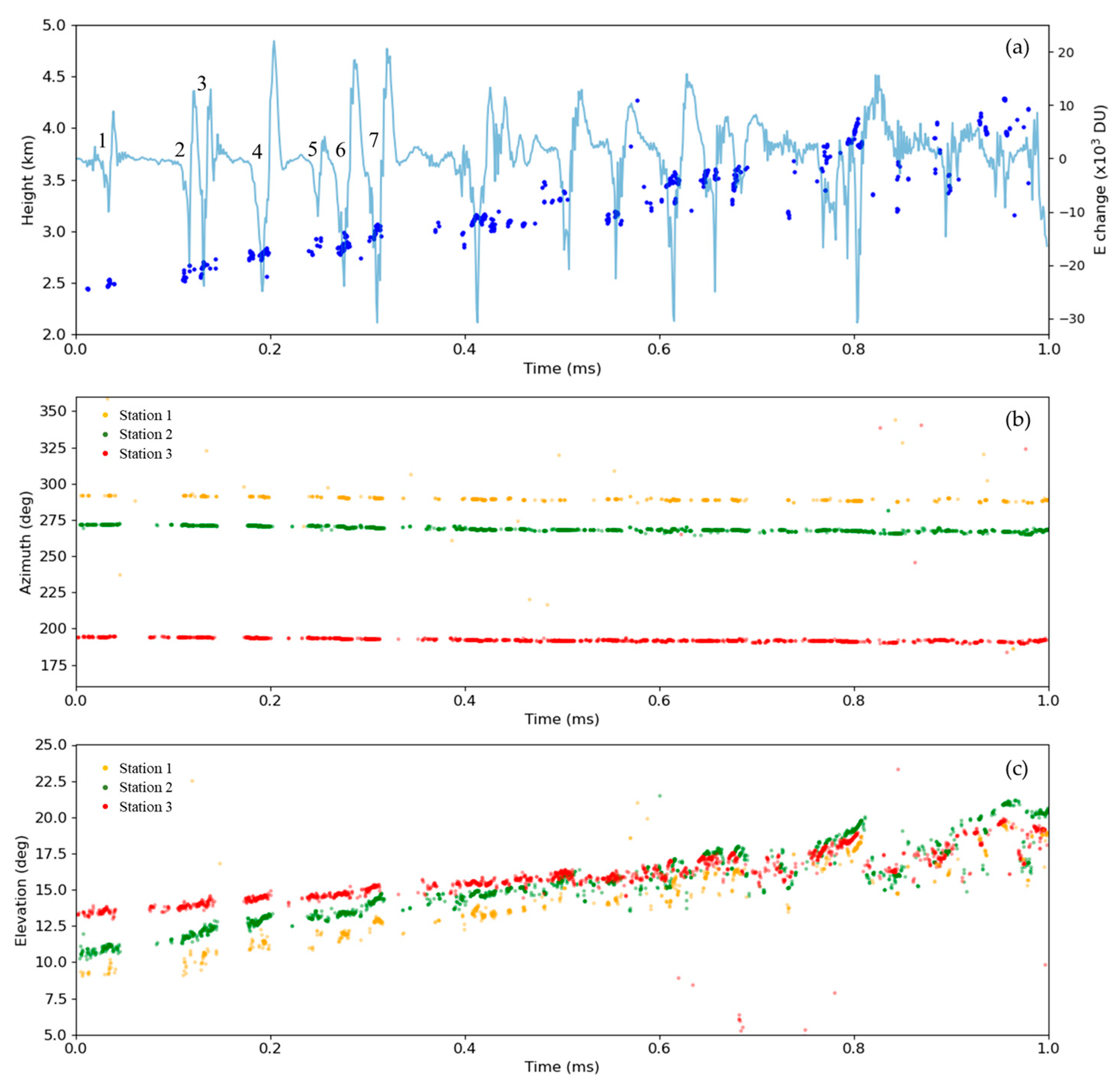
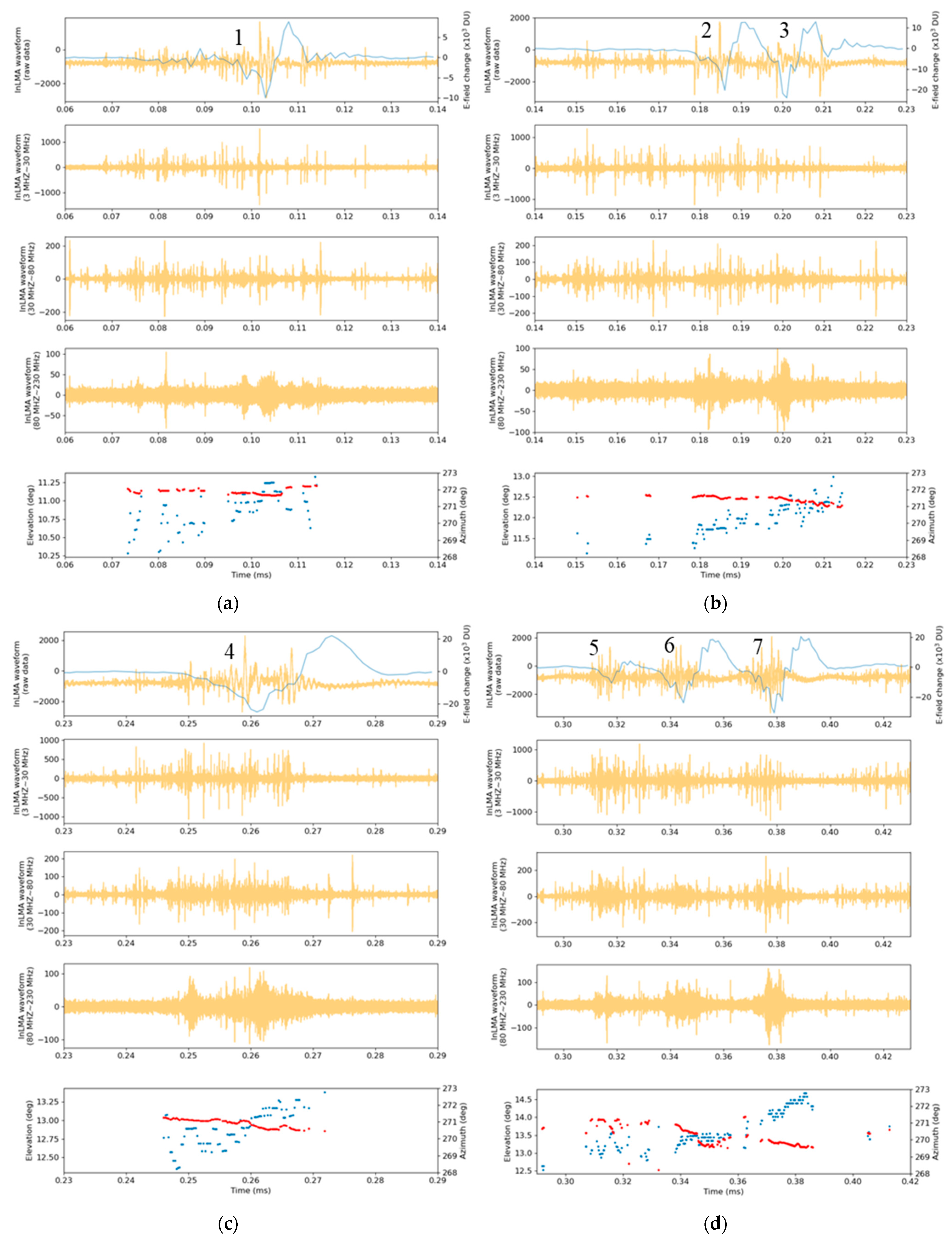

Disclaimer/Publisher’s Note: The statements, opinions and data contained in all publications are solely those of the individual author(s) and contributor(s) and not of MDPI and/or the editor(s). MDPI and/or the editor(s) disclaim responsibility for any injury to people or property resulting from any ideas, methods, instructions or products referred to in the content. |
© 2023 by the authors. Licensee MDPI, Basel, Switzerland. This article is an open access article distributed under the terms and conditions of the Creative Commons Attribution (CC BY) license (https://creativecommons.org/licenses/by/4.0/).
Share and Cite
Yang, J.; Wang, D.; Huang, H.; Wu, T.; Takagi, N.; Yamamoto, K. A 3D Interferometer-Type Lightning Mapping Array for Observation of Winter Lightning in Japan. Remote Sens. 2023, 15, 1923. https://doi.org/10.3390/rs15071923
Yang J, Wang D, Huang H, Wu T, Takagi N, Yamamoto K. A 3D Interferometer-Type Lightning Mapping Array for Observation of Winter Lightning in Japan. Remote Sensing. 2023; 15(7):1923. https://doi.org/10.3390/rs15071923
Chicago/Turabian StyleYang, Junchen, Daohong Wang, Haitao Huang, Ting Wu, Nobuyuki Takagi, and Kazuo Yamamoto. 2023. "A 3D Interferometer-Type Lightning Mapping Array for Observation of Winter Lightning in Japan" Remote Sensing 15, no. 7: 1923. https://doi.org/10.3390/rs15071923
APA StyleYang, J., Wang, D., Huang, H., Wu, T., Takagi, N., & Yamamoto, K. (2023). A 3D Interferometer-Type Lightning Mapping Array for Observation of Winter Lightning in Japan. Remote Sensing, 15(7), 1923. https://doi.org/10.3390/rs15071923





